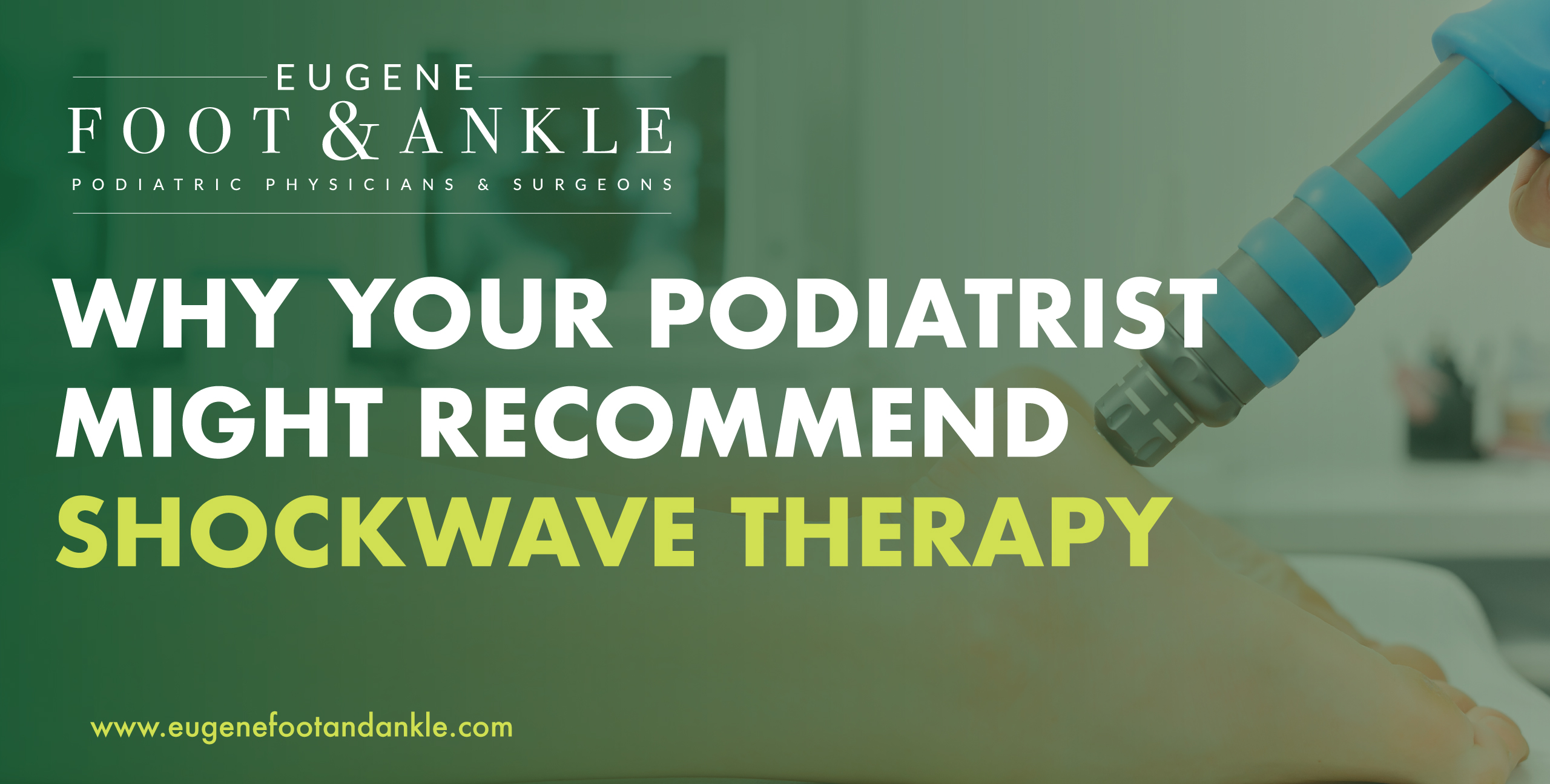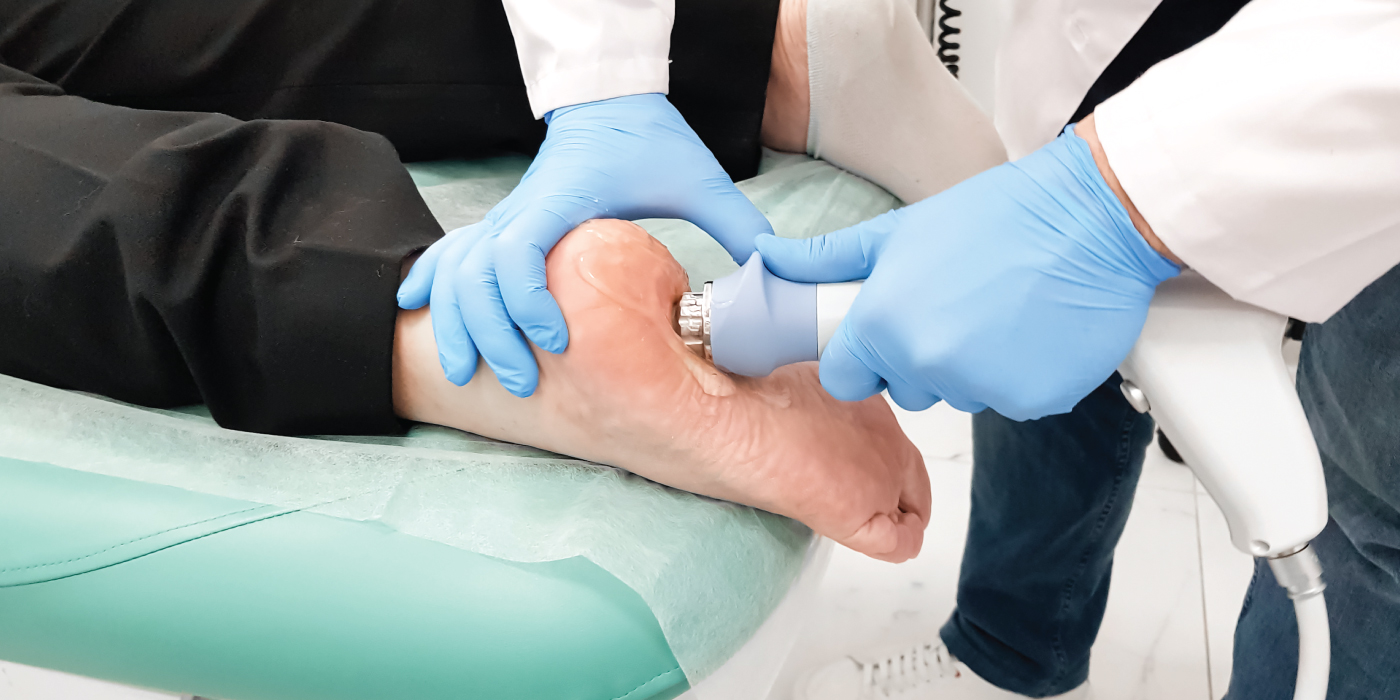Why Your Podiatrist Might Recommend Extracorporeal Shockwave Therapy
If you’ve ever experienced foot or ankle pain, you know how debilitating it can be. As the foundation of our body, our feet and ankles bear significant weight and stress daily. Injuries or conditions in these areas can significantly impact our mobility and overall quality of life. That’s where extracorporeal shockwave therapy comes in. This innovative treatment has been gaining popularity in podiatry for effectively treating various foot and ankle conditions. This blog will explore why your podiatrist might recommend shockwave therapy and what you can expect from this non-invasive and highly effective treatment option.

What is Extracorporeal Shockwave Therapy?
Extracorporeal Shockwave Therapy (ESWT) is a non-invasive treatment that uses the power of pressure waves to spark the body’s healing processes. Initially, it was used for crushing kidney stones, but over time, medical professionals realized its potential reached far beyond that. Today, its benefits ripple out across numerous fields of medicine, podiatry being one of them.
So, how exactly does it work? Think of the pressure waves as a wake-up call to your body, nudging it to kick-start the repair work in areas where healing may be slow, or circulation could be better; this allows for healing without incisions or surgery.
How is Extracorporeal Shockwave Therapy Used in Podiatry?
With a formidable track record in treating foot and ankle ailments, Shockwave Therapy has become a significant tool in a podiatrist’s arsenal.
Picture enduring the relentless pain of plantar fasciitis or Achilles tendinopathy, with conventional treatments barely making a difference. This is where shockwave therapy comes in. Its high-energy acoustic waves go deep beneath the surface, stimulating blood flow and promoting the regeneration of bone and soft tissue. This not only aids in healing but also helps alleviate the localized pain, thereby providing a much-needed respite.
While it may sound like a futuristic treatment, shockwave therapy is a reality in many podiatry clinics today. It has proven particularly effective for conditions that have a penchant for outlasting other forms of treatment, making it a critical tool in the pursuit of patient recovery. Remember, it’s not magic – it’s just good medicine! With each session,
your body receives a gentle nudge, reminding it to kick-start the healing process where needed most.

When Do Podiatrists Choose to Use Shockwave Therapy?
Shockwave therapy isn’t a first-line treatment utilized by podiatrists. It’s usually used in situations where traditional forms of treatment are proving ineffective. For example, let’s say you’ve been dealing with the relentless pain of plantar fasciitis. You’ve tried physical therapy, anti-inflammatory medications, even orthotic shoes- but the pain persists. This is when your podiatrist might suggest shockwave therapy.
This treatment is also an ideal alternative for individuals who are not keen on having surgery or having to rely on long-term medication. When your foot or ankle condition resists all standard treatment methods, it may be time to consider shockwave therapy as your next action.
The Benefits of Shockwave Therapy in Podiatry
Shockwave Therapy is a non-surgical option that eliminates the need for anesthesia and minimizes the potential risks that may show up in surgical interventions. It allows for an immediate return to everyday activities, so there is no need to pause your life while you recover – you can walk out of the clinic and back into your routine. Shockwave Therapy stands as a testament that advanced and effective treatment does not always equate to surgery or extensive medication.
Shockwave therapy offers a gentle yet powerful solution for chronic conditions in foot and ankle treatments. With its patient-friendly approach and impressive success rate, it’s little wonder that this therapy has become a favorite choice in podiatry.
What to Expect
During your Shockwave Therapy session, your podiatrist will use a handheld device that sends pressure waves directly to the troubled area. During this time, you might feel a sensation of mild discomfort, like the feeling of a deep tissue massage, which is usually well-tolerated by most patients.
Post-procedure, your body’s natural healing process kicks into high gear. You may feel some tenderness in the treated area – this sensation is comparable to after an intense gym session. This is your body responding to the treatment and commencing its repair work, and it shouldn’t last for long.
Shockwave Therapy at Eugene Foot and Ankle
At Eugene Foot and Ankle, we’re not just practitioners but advocates for your overall well-being. If you find yourself wrestling with persistent foot or ankle discomfort and
traditional treatment options have left you wanting, we encourage you to contact us here at Eugene Foot and Ankle. Shockwave therapy could be the answer!
Contact Us
Eugene
P: (541) 683-3351
F: (541) 683-6440
Hours:
Monday............ 8:00am - 5:00pm
Tuesday............ 8:00am - 5:00pm
Wednesday............ 8:00am - 5:00pm
Thursday............ 8:00am - 5:00pm
Friday............ 8:00am - 4:00pm (Only available on phones)
Closed for lunch from 12pm - 1pm and closed until 1:30pm on Tuesdays
© Copyright 2024 Eugene Foot and Ankle. All Rights Reserved. | Privacy Policy.
